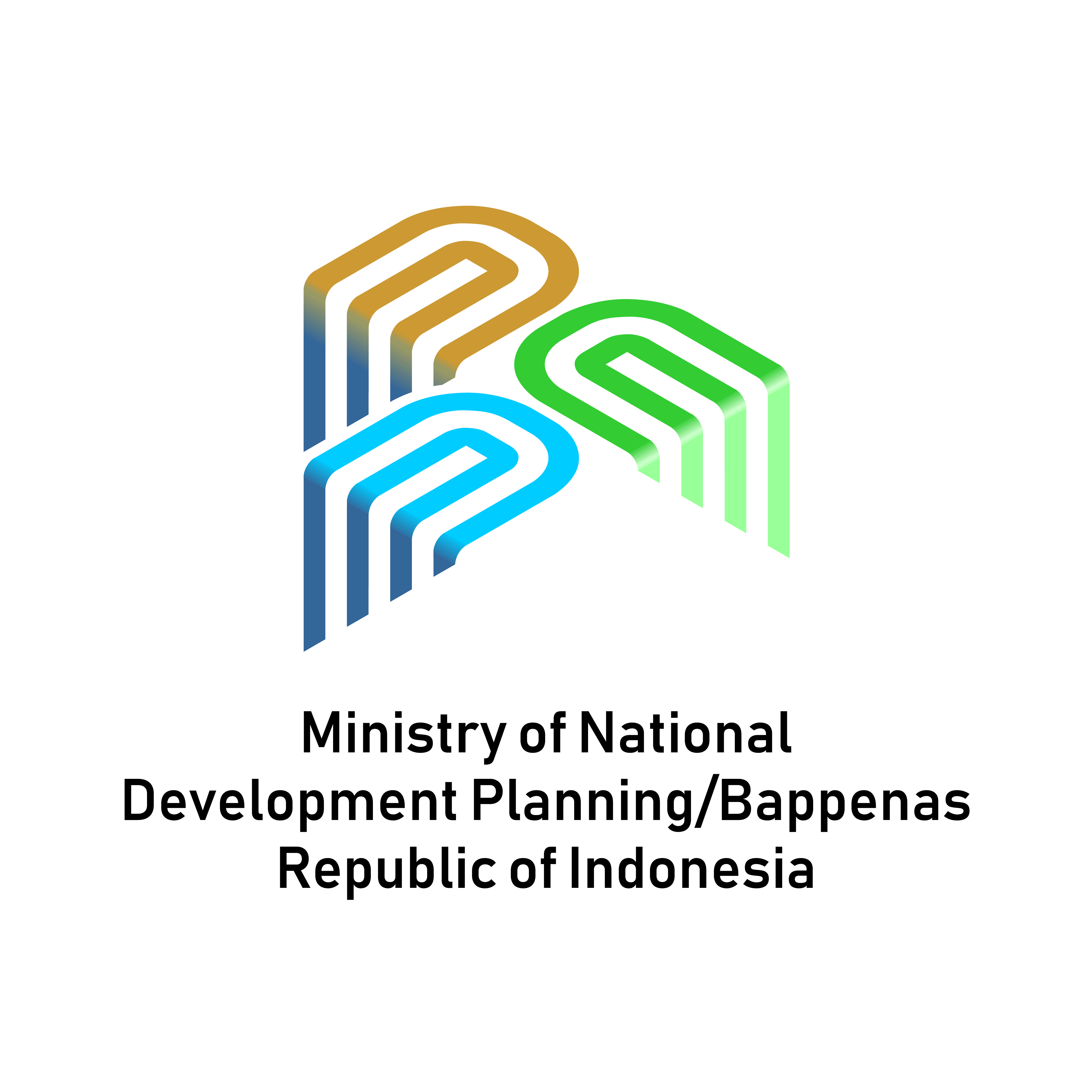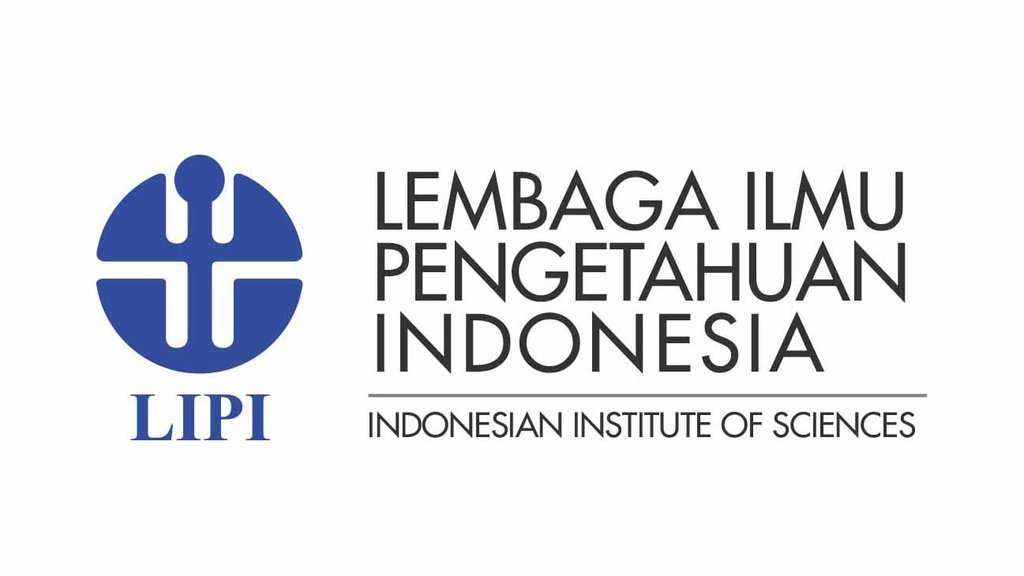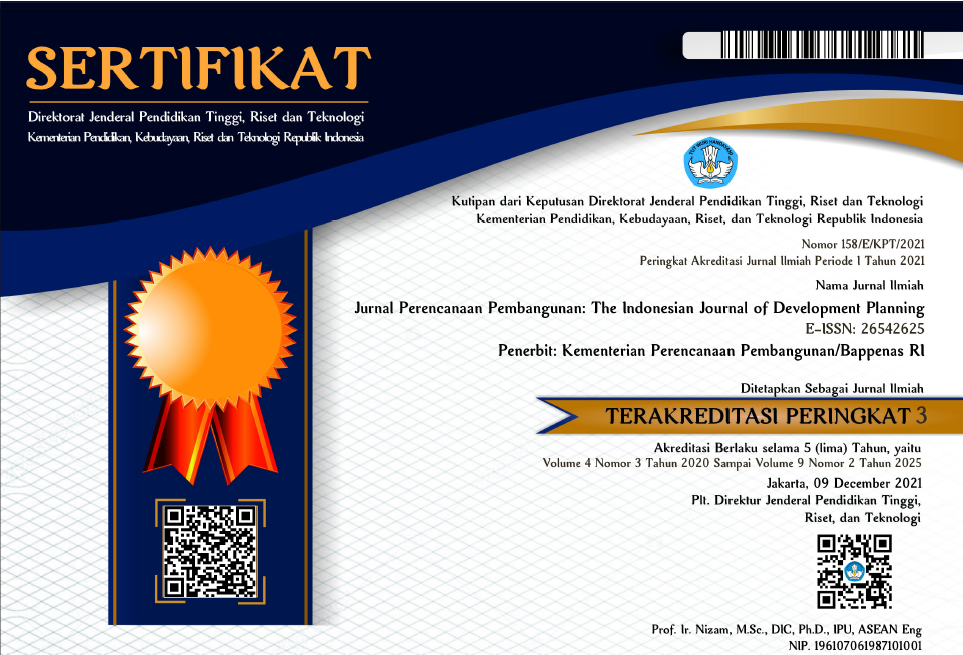Does Expenditure Structure Affect Rural Poverty Alleviation in Indonesia? The Role of Village Fund Management
DOI:
https://doi.org/10.36574/jpp.v8i1.524Keywords:
village fund spending, village fund, rural povertyAbstract
This study aimed to explore public financial management at the village level and identify the types of village fund expenditures that had the most significant relationship in reducing short-term rural poverty in Indonesia. Using the 2019-2021 panel data and the fixed effect method, the authors analyzed the relationship between the five types of village fund spending on poverty in 49,192 village units. The estimation results showed that spending merely on village development negatively and significantly affected the number of low-income rural families in Indonesia. Meanwhile, spending on disaster management, emergencies, and village urgency indicated a positive and significant relationship with the number of low-income families in the village. It implies that the government should focus on spending programs and activities that create job opportunities and increase income for rural poverty reduction. The government also needs to improve data related to uniformity and validity in measuring, recording, and reporting data in ministries, institutions, and regional governments. Thus, in allocating village funds, the government must expand the formula allocation so that village funds can significantly reduce rural poverty.
Downloads
References
Agyemang-Duah, W., Kafui Gbedoho, E., Peprah, P., Arthur, F., Kweku Sobeng, A., Okyere, J., & Mengba Dokbila, J. 2018. Reducing poverty through fiscal decentralization in Ghana and beyond: A review. Cogent Economics & Finance, 6(1), 1476035.
Arifin, B., Wicaksono, E., Tenrini, R. H., Wardhana, I. W., Setiawan, H., Damayanty, S. A.,. & Handoko, R. 2020. Village fund, village-owned-enterprises, and employment: Evidence from Indonesia. Journal of Rural Studies, 79, 382-394.
Boonperm, J., Haughton, J., & Khandker, S. R. 2013. Does the Village Fund matter in Thailand? Evaluating the impact on incomes and spending. Journal of Asian Economics, 25, 3-16.
Central Bureau of Statistics. 2022. Jumlah Penduduk Miskin Menurut Wilayah. Jakarta. Retrieved from https://www.bps.go.id/indicator/23/183/1/jumlah-penduduk-miskin-menurut-wilayah.html
Chandoevwit, W., & Ashakul, B. 2008. The impact of the village fund on rural households. TDRI Quarterly Review, 23(2), 9-16.
Cheema, G. S., & Rondinelli, D. A. (Eds.). 2007. Decentralizing governance: Emerging concepts and practices. Brookings Institution Press.
Faguet, J. P. 2014. Decentralization and governance. World Development, 53, 2-13.
Fan, S., Hazell, P., & S. K. Thorat. 2000. Impact of Public Expenditure on Poverty in Rural India. Economic and Political Weekly, 35(40), 3581–3588. http://www.jstor.org/stable/4409807
Hernández-Trillo, F. 2016. Poverty alleviation in federal systems: The case of México. World Development, 87, 204-214.
Hidalgo-Hidalgo, M., & Iturbe-Ormaetxe, I. 2018. Long-run effects of public expenditure on poverty. Journal of Economic Inequality, 16(1), 1-22. doi:https://doi.org/10.1007/s10888-017-9360-z
Hidayat, Ar. Rohman T., Kenichiro Onitsuka, Corinthias P. M. Sianipar, & Satoshi Hoshino. 2022. Distance-Dependent Migration Intention of Villagers: Comparative Study of Peri-Urban and Remote Villages in Indonesia. Administrative Sciences 12: 48. https://doi.org/10.3390/admsci12020048
Indra, J., & Khoirunurrofik, K. 2022. Understanding the role of village fund and administrative capacity in stunting reduction: Empirical evidence from Indonesia. PloS one, 17(1), e0262743.
Khoirunurrofik, K., Kurniawan, Y., & Wiguna, G. 2021. Reformulasi Dana Desa untuk Mewujudkan Transfer Berbasis Kinerja: Momentum Peningkatan Peran di Masa Pandemi. Indonesian Treasury Review: Jurnal Perbendaharaan, Keuangan Negara Dan Kebijakan Publik, 6(1), 43 - 56. https://doi.org/https://doi.org/10.33105/itrev.v6i1.278
Lewis, B. D. 2015. Decentralizing to villages in Indonesia: Money (and other) mistakes.
Public Administration and Development, 35(5), 347-359.
Manurung, E. T., Maratno, S. F. E., Permatasari, P., Rahman, A. B., Qisthi, R., & Manurung, E. M. 2022. Do village allocation funds contribute towards alleviating hunger among the local community (SDG#2)? An Insight from Indonesia. Economies, 10(7), 155. doi:https://doi.org/10.3390/economies10070155
Muh, A. A., & Naue, T. F. 2015. Public expenditures and poverty: Evaluation of the government's priority programs in Gorontalo Province. Economic Journal of Emerging Markets, 7(2), 107-119. doi:https://doi.org/10.20885/ejem.vol7.iss2.art4
Nurkse, R. 1953. Problems of Capital Formation in Underdeveloped Countries. Oxford University Press, New York.
Nursini, N. 2019. Poverty alleviation in the context of fiscal decentralization in Indonesia. Economics & Sociology, 12(1), 270-368.
Puri, I. T., & Khoirunurrofik, K. 2021. The Role of Village-Owned Enterprises (BUMDES) for The Village Community Economy. Economics Development Analysis Journal, 10(1), 12-21.
Rondinelli, Nellis, and Cheema, “Decentralization in Developing Countries”; D. A. Rondinelli, J. McCullough, and R. W. Johnson, “Analyzing Decentralization Policies in Developing Countries: A Political-Economy Framework,” Development and Change 20, no. 1 (1989): 57–87.
Schneider, A. 2003. Decentralization: Conceptualization and measurement. Studies in Comparative International Development, 38(3), 32-56. doi:https://doi.org/10.1007/BF02686198
Shahzad, S., & Yasmin, B. 2016. Does fiscal decentralization matter for poverty and income inequality in Pakistan? Pakistan Development Review, 55(4), 781-802. Retrieved from https://www.proquest.com/scholarly-journals/does-fiscal-decentralisation-matter- poverty/docview/2235647970/se-2
Siburian, M. E. 2022. The link between Fiscal Decentralization and Poverty–Evidence from Indonesia. Journal of Asian Economics, 101493.
Sigit, T., & Kosasih, A. 2020. Pengaruh Dana Desa terhadap Kemiskinan: Studi Tingkat Kabupaten/Kota di Indonesia. Indonesian Treasury Review: Jurnal Perbendaharaan, Keuangan Negara Dan Kebijakan Publik, 5(2), 105-119. https://doi.org/https://doi.org/10.33105/itrev.v5i2.170
Suryahadi, A., & Al Izzati, R. 2018. Cards for the Poor and Funds for Villages: Jokowi’s Initiatives to Reduce Poverty and Inequality. Journal of Southeast Asian Economies, 35(2), 200–222. https://www.jstor.org/stable/26539214
Todaro, M. P., & Smith, S. C. 2011. Economic Development. Pearson UK.
Yusuf, M., & Khoirunurrofik, K. 2022. The Relationship of Village Funds with Village Economic Development: A Village Level Study in Indonesia. Jurnal Bina Praja, 14(3), 493–504. https://doi.org/10.21787/jbp.14.2022.493-504
Downloads
Published
Versions
- 2024-06-12 (2)
- 2024-06-10 (1)
How to Cite
Issue
Section
License
Copyright (c) 2024 Jurnal Perencanaan Pembangunan: The Indonesian Journal of Development Planning

This work is licensed under a Creative Commons Attribution-NonCommercial-ShareAlike 4.0 International License.
This is an open-access article distributed under the terms of the Creative Commons Attribution-NonCommercial-ShareAlike 4.0 International License. Copyright © Kementerian PPN/Bappenas RI


















